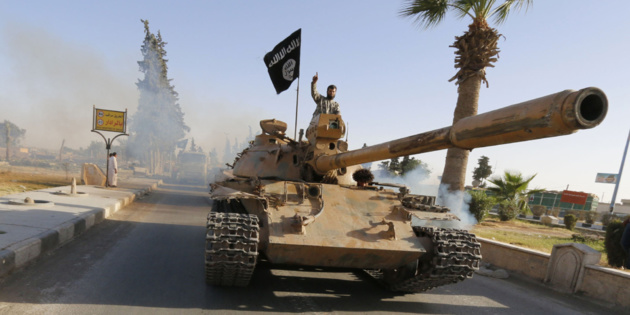
Credits DR
Since the beginning of the Syrian civil war, the international community has laid the blame with Bashar Al-Assad. As French Minister for Foreign Affairs Laurent Fabius put it in a speech at New York on 27th September 2014, “It is the regime itself that has made this group what it is, by using them to obstruct those who want to change the system”. In fact, although the Syrian opposition had originally set out to be a peaceful demonstration, Al-Assad liberated several radical Islamists, who have today become key leaders in Jihadi groups, such as in the Al-Nusra Front or in IS.
Furthermore, in a more indirect way, the regime has encouraged the development of this organisation within the political void created by the civil war. It must be noted that there is a strong absence of military action against Islamic groups, along with a deference to the black-market in oil from areas controlled by the organisation (In the Euphrates valley), all the while being aware that this financial source is crucial for the organisation’s wellbeing.
Bashar Al-Assad’s intention is clear: to destabilise his own country and to radicalise the opposition in order to establish his legitimacy on the international level, by presenting himself as the only bulwark against terrorism in Syria. However, although his actions have contributed massively to the development of Islamic State, the group have been gaining significant regional support since 2003.
The war in Iraq and the creation of Islamic State
Iraq is a majority Muslim country, of which 17% are Sunni, and 77% are Shia. Since 2003, this difference has been exacerbated by foreign intervention and the establishment of an interim, then transitory, government, in 2004 and 2005. In fact, the Shia President Ibrahim Al Jaafari has led sectarian policies, suppressing the presence of the Sunni minority from political life. No Sunni minister has been nominated to highly regarded positions like Defence, Domestic or Foreign Affairs. They have shifted to formal positions which do not have a real impact on the politics of the country. Equally, while Saddam Hussein’s army was being dismantled, a number of officials and non-commissioned officers were engaged in the Sunni rebellion. Many of them have now found themselves in key positions in Islamic State, who rely on a mostly Iraqi structure.
The opposition, as well as mobilising against the Shia power, have set themselves up in the country in order to fight against foreign presence. The creation of Al Qaeda in Iraq was driven by the notion of combatting Western influence in the region. At the death of leader Abu Musad Al-Zarqawi in 2006, the organisation took a more violent turn. And the authority was disputed between the new official leader, Abu Hamza al Muhajir, and Al-Baghdadi, who announced the creation of Islamic State the very same year. This new group, composed mainly of former Al-Qaeda members from Iraq, marked a divergence in vision between the new generation of Jihadi and the ideological direction of Al-Qaeda. In fact, Al-Baghdadi’s objective was more territorial and he led first and foremost the fight against the Iraqi Shia power, but also against the Syrian power. In 2007, he announced that “Al-Qaeda in Iraq no longer exists”.
The deference of the Persian Gulf
This rivalry between Sunni and Shia stretches across the Iraqi and Syrian borders, and affects political alliances across the whole of the Middle East. This has transformed into a dynamic which some are calling “the New Cold War” between Iran, majority Shia, and Saudi Arabia, who are majority Sunni. In this context, the implication of Persian Gulf countries in the financing of Islamist groups in Syria and Iraq is directly linked to Iran’s participation in the war.
Although Kuwait, Bahrain and Abu Dhabi are known for favouring these groups, Saudi Arabia is without a doubt the country that offers the most support: politically, financially and militarily. In fact, the Saudi regime never accepted the Iraqi Shia regime following the fall of Saddam Hussein, suspecting direct interference from Iran. Equally, the democratic aspirations of the Middle East, rising to importance during the Arab Spring, directly threatened the political survival of the reigning Saudi family, who implemented radical policies and a fundamental interpretation of Islam in the country. In this sense, the financing of the more reactionary and oppositional Islamist groups is a way, for the Saudis, to assure their survival and to fight against Shia powers installed in the region.
Islamic State has taken advantage of a region destabilised and torn apart from different interpretations of Islam, the presence of foreign intervention, the way that minorities are treated politically, and above all, a willingness of states to concentrate on their own survival, even at the detriment of regional stability. All of these elements combined have actively participated in the creation of a new type of Jihadi movement, representing a threat for the whole region.




























